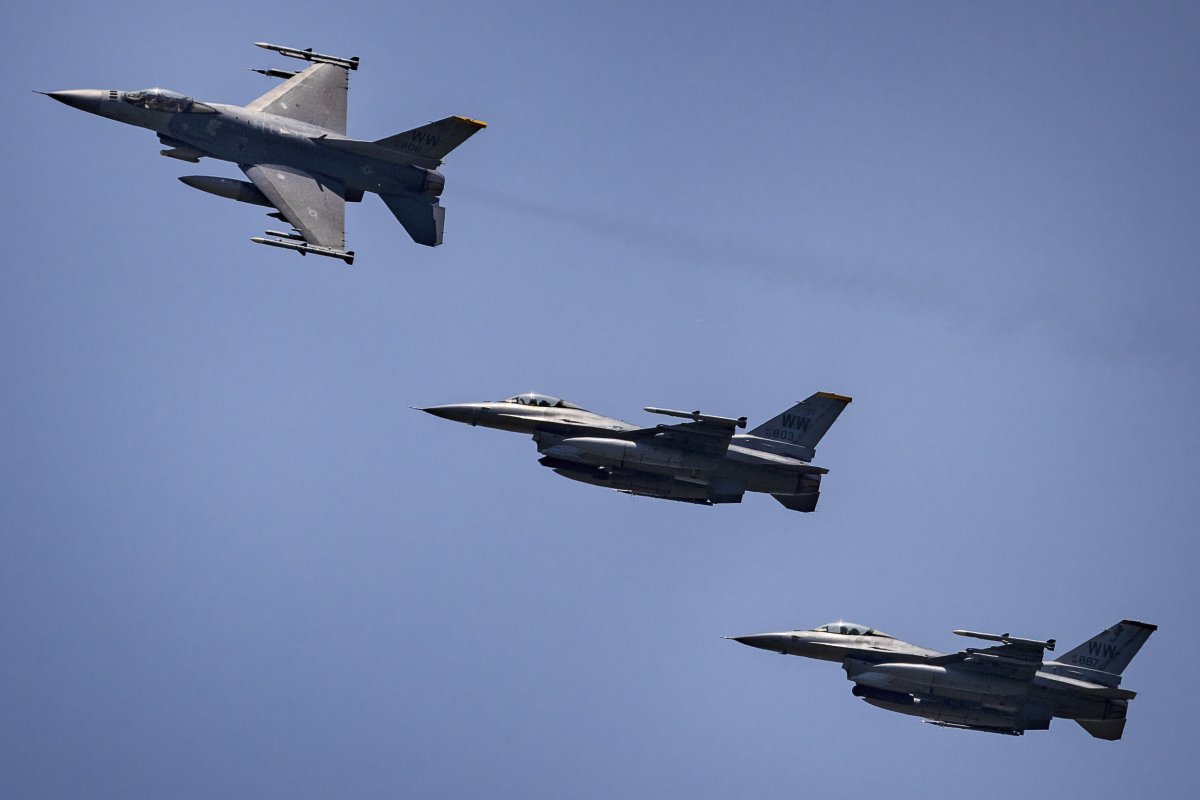Micah McCartney and John Feng
The Philippines and the United States—one of the oldest alliances in Asia—began three days of joint air and sea patrols in the South China Sea on Tuesday aimed at pushing back against China's constant probing in the region.
The exercise, which runs through Thursday, involves the Philippine Air Force and the U.S. Indo-Pacific Command (INDOPACOM). It is taking place in the "West Philippine Sea," Manila's name for the portion of the South China Sea that falls within the Philippines' exclusive economic zone, where Beijing has been actively asserting its claim to contested islands, reefs and atolls in the Spratly Islands archipelago.
In a recent visit to Hawaii, President Ferdinand Marcos Jr. issued one of his strongest rebukes yet of China's "persistent unlawful threats and challenges against Philippine sovereign rights and jurisdictions." In his 17 months in office, Marcos' government has filed dozens, if not hundreds, of diplomatic protests with Beijing over the Chinese coast guard and maritime militia's harassment of Filipino fishermen and coast guard vessels.
In at least half a dozen run-ins around Manila-held Second Thomas Shoal since August, the Philippines has accused Chinese ships of unleashing water cannons, setting up barriers and blockades, and ramming. In February, a Philippine Coast Guard crew was said to have been temporarily blinded by a Chinese coast guard ship's "military-grade laser."
Each of the incidents drew a strongly worded response from the U.S. State Department and last month from the U.S. president himself. Joe Biden reaffirmed the U.S.-Philippines Mutual Defense Treaty of 1951 and pledged to respond militarily against any attack on Filipino servicemembers, including in the South China Sea.
But the constant Chinese pressure in the "gray zone"—actions that stop short of war—has not stopped; skepticism about the depth of Washington's commitment is rising, observers in the region say, at a time when multiple conflicts are testing America's bandwidth.
In a post on X (formerly Twitter) on Monday, Derek Grossman, a security analyst at the RAND Corp. think tank, said interlocutors in the Philippines were questioning the U.S.' commitment to defend Manila's de facto territories in the Spratlys, after the long-time American ally lost ground to Beijing in the previous decades and had to watch as China built now fully militarized artificial islands in the area.
The Philippines is "very pro-U.S.," Grossman wrote on Tuesday. But memories of U.S. inaction when, in 2012, Chinese forces wrested Scarborough Shoal from Manila's control remain "an anti-U.S. trigger," he said.
In 2014, the Obama administration brought the disputed Senkaku Islands within the scope of Washington's security treaty with Tokyo. Manila, however, had to wait five more years until the Trump administration publicly committed American power toward the defense of Philippine-held territories in the South China Sea—"a betrayal," Grossman said.
China asserts ownership over the territories and maritime zones of nearly the entirety of the energy-rich South China Sea, challenging some half a dozen neighboring states in the process. Beijing appears to have the wherewithal to tirelessly probe the defenses of major claimants including the Philippines and Vietnam.
The U.S., meanwhile, has in recent years stepped up warnings about the implications of acquiescing to Chinese control of local sea lines—critical maritime trade routes that carry an estimated one-third of global shipping.
Chinese Foreign Ministry spokesperson Mao Ning said on Wednesday that the U.S.-Philippines patrols "should not harm China's territorial sovereignty and maritime rights."
 U.S. Air Force F16 fighter jets fly in formation during U.S.-Philippines joint air force exercises dubbed Cope Thunder at Clark Air Base on May 9, 2023 in Mabalacat, Pampanga province, Philippines. Some observers say China's more assertive recent posture in the South China Sea is meant to probe the U.S.' security commitment to treaty ally the Philippines.EZRA ACAYAN/GETTY IMAGES
U.S. Air Force F16 fighter jets fly in formation during U.S.-Philippines joint air force exercises dubbed Cope Thunder at Clark Air Base on May 9, 2023 in Mabalacat, Pampanga province, Philippines. Some observers say China's more assertive recent posture in the South China Sea is meant to probe the U.S.' security commitment to treaty ally the Philippines.EZRA ACAYAN/GETTY IMAGESChina's immediate aim is to prevent the Philippines from resupplying and repairing the BRP Sierra Madre—a rusty Philippine Navy warship grounded at Second Thomas Shoal in 1999 for use as an outpost—after which it would "likely move in to establish its own control over the reef," said Gregory Poling, director of the Southeast Asia Program at the Center for Strategic and International Studies think tank in Washington, D.C.
"In the long term, it hopes to use non-military pressure to convince the Philippines and all the other claimants that resistance is futile and they should acknowledge China's claimed historic rights to all of the South China Sea," Poling told Newsweek.
China's gray zone moves against the U.S. ally were not aimed at testing America's resolve, Poling said. Beijing "doesn't have any better ideas," he said, arguing that its tactics were backfiring and pushing the Philippines—and others—closer to the United States.
Su Tzu-yun, a researcher at Taiwan's top military think tank, the Institute for National Defense and Security Research, told Newsweek that Beijing had identified U.S.-skeptic elements in Manila as a potential vulnerability in what has become a "ring of containment" against China—led by the U.S. and featuring South Korea, Japan, Taiwan and the Philippines.
The Chinese navy's submarines operate frequently in the depths of the South China Sea, Su said. "The People's Liberation Army's activities not only test the bottom line of the U.S. military, but also use the U.S. military's presence to 'train' the PLA and protect the movements of its underwater fleet."
"It's like killing three birds with one stone," he said.
No comments:
Post a Comment